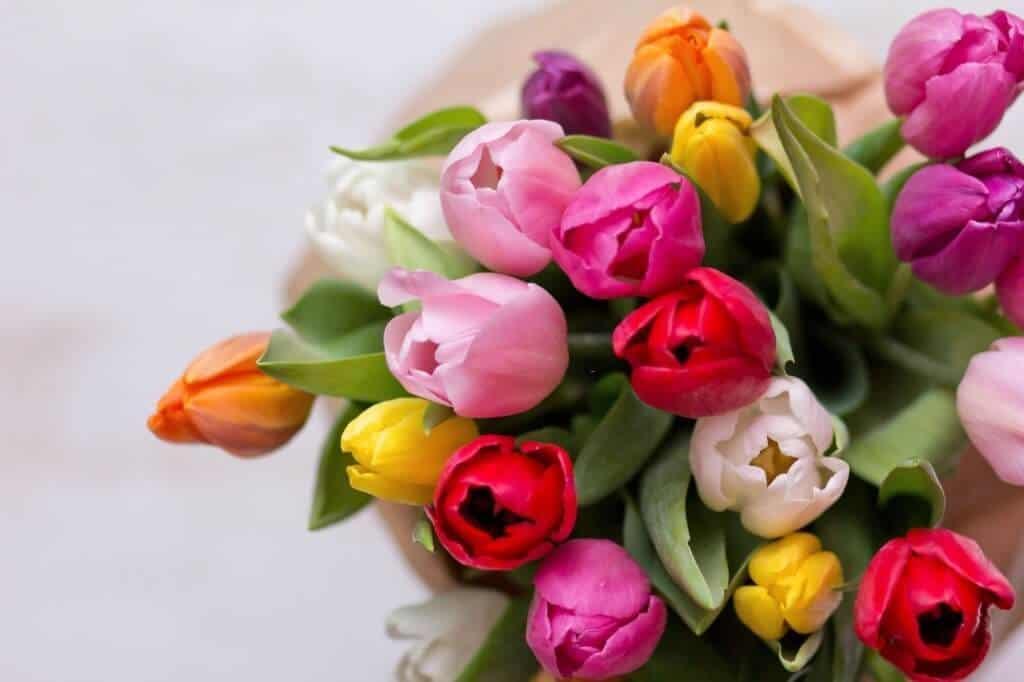Tulip is a beautiful flower that blooms in spring in temperate countries. This flower has many vibrant colors from the most delicate and gentle colors to the most colorful colors. Tulip belongs to the lily family (surprisingly), grown and propagated by bulbs, with a total of 75 species. Currently, Tulips are cultivated in many places around the world, grown as cut flowers and planted in ornamental flower beds in gardens and indoors.
Tulip is derived from “turban”, an ancient Persian word, the name of a head scarf, perhaps because the flower looks similar?
Image of brilliant tulips
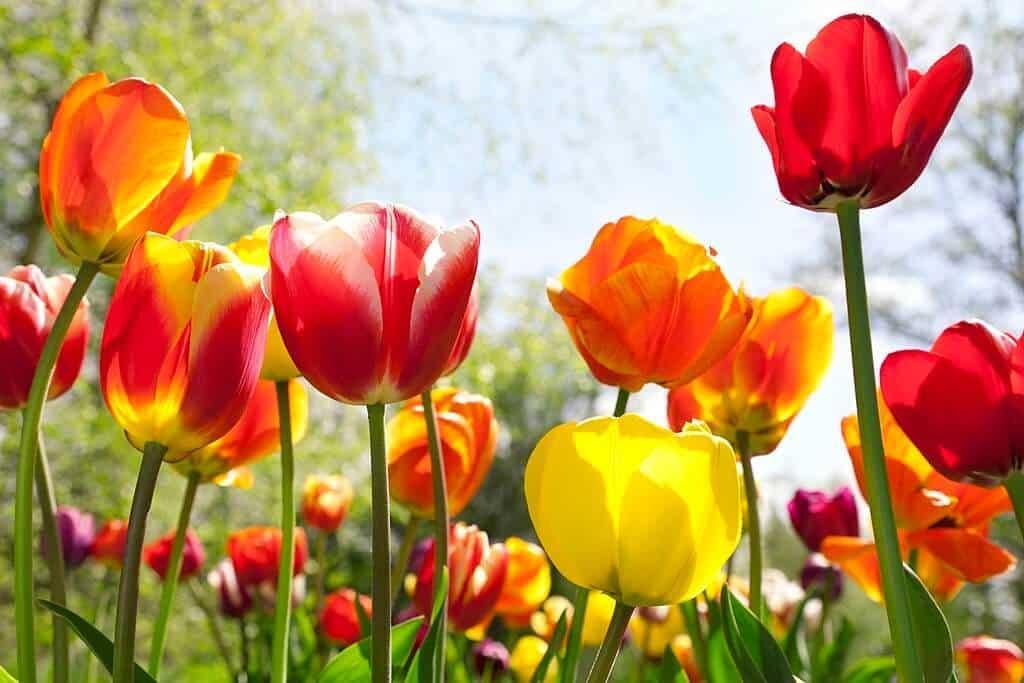
Since the beginning, tulips have been widely grown in Southern European countries to Central Asia. Until the 17th century, Tulip was grown and cultivated in many places with temperate climates, places where tulips easily grew.
Tulips were first found in the valleys of the Tian Shan mountains. By 1055, Tulips began to be grown in Constantinople (now Istanbul, Turkey). By the 15th century, Tulip became the most expensive flower and became the symbol of the Ottoman Empire. Although cultivated very early in Persia, it was not until the sixteenth century that Westerners learned about Tulip. And when Westerners learned about this flower, Tulip became a trend in Europe, leading to a period called Tulip mania. (first)
Tulips appeared as a trend in Europe
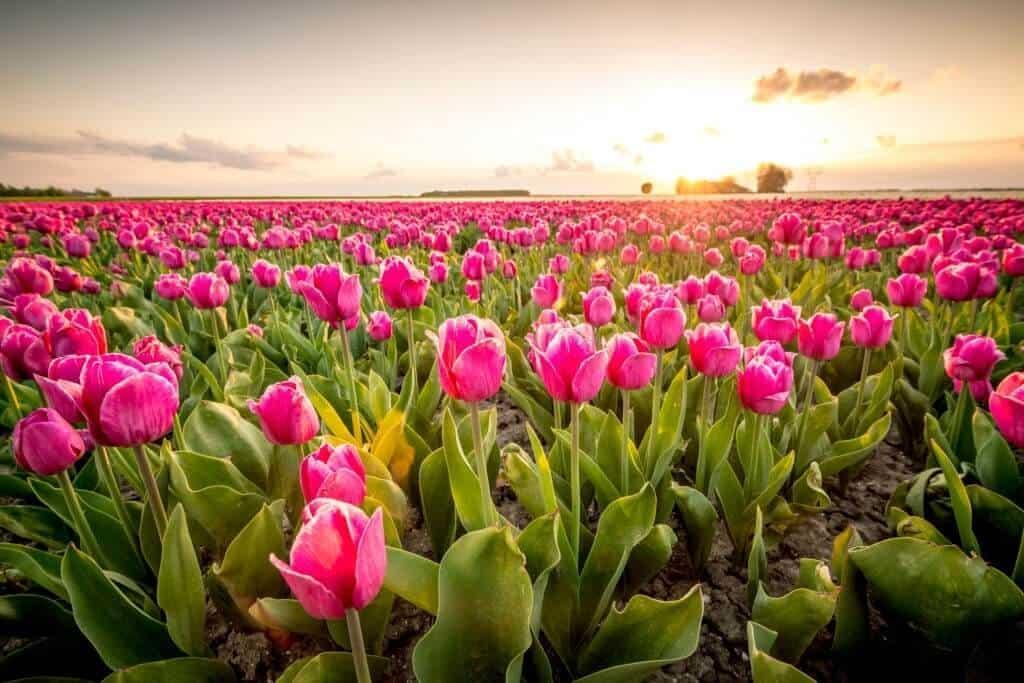
After making waves in the Netherlands with peak prices during Tulip mania, tulips began to move to the rest of Europe, from 40° North latitude and below. And Tulip became an indispensable flower for European life and society from that time until today.
There were many Dutch Golden Age paintings depicting tulips, and since then, tulips have been associated with the Netherlands. In 17th century Holland, during tulip mania, tulip bulbs were infected with a virus, causing blotches on the flowers. These spotted flowers are well received by everyone and are very valuable. After that, the disease disappeared, and Rembrant (2) painted some of the most beloved flowers of the period. Currently, tulips have tens of thousands of varieties and have become one of the most popular flowers in the world, grown both as ornamental plants and as cut flowers.
Tulips are extremely popular in the Netherlands
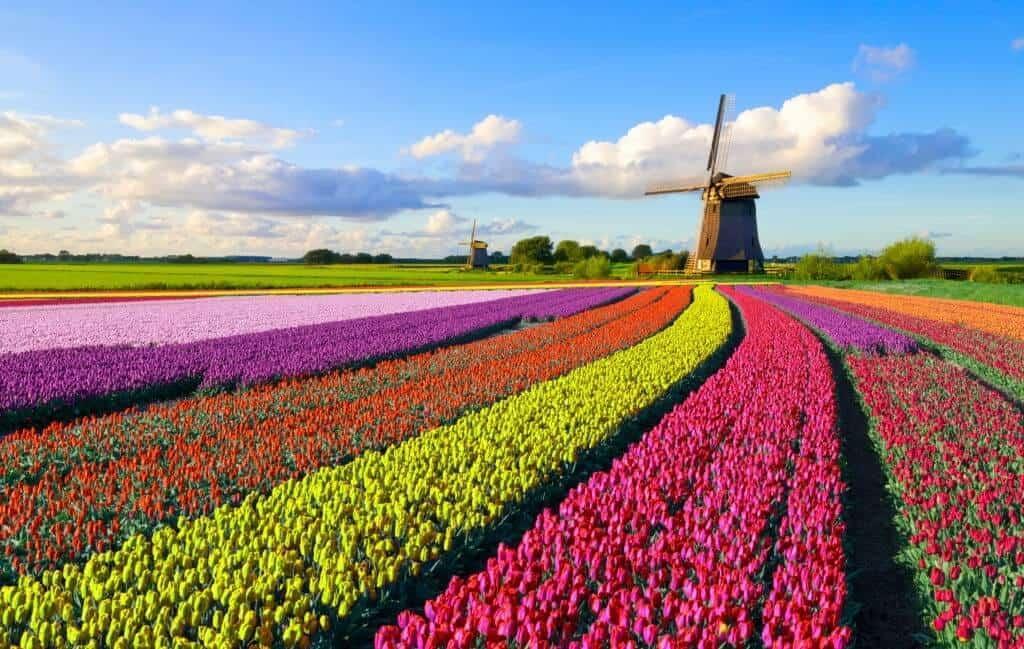
In temperate regions, tulips are perennial flowers that bloom in spring. That means you only need to plant it in the garden once, and you can keep the bulbs year after year. There are many types of Tulip, depending on the type, the tree can be from 10-70cm tall.
Flowers: tulips usually have a very large diameter, round flowers that are symmetrical through the center, and are bisexual (including both male and female reproductive organs (pollen and pistil).
Leaves: Tulip has very few leaves. Species with large flowers usually have more leaves. Normally, tulips have 2-6 leaves, some varieties have up to 12 leaves (but very few). Tulip leaves grow on a flower bed, have a layer of wax on the surface, the leaves grow alternately, light green to dark green depending on the variety.
Tulip bulbs: Tulip bulbs are composed of a layer of flesh surrounding the sprout in the middle, the outer layer is a brown shell, and there may be a layer of hair on the inside of the shell.
Color: The colors of tulips are extremely vibrant and diverse, there are many single colors (white, yellow, red, pink, orange from dark to light) and mixed colors, with many shapes, both Round wings and long wings, both single and double (single are types with one layer of wings, double have two or more layers of wings)
Tulips come in many vibrant colors
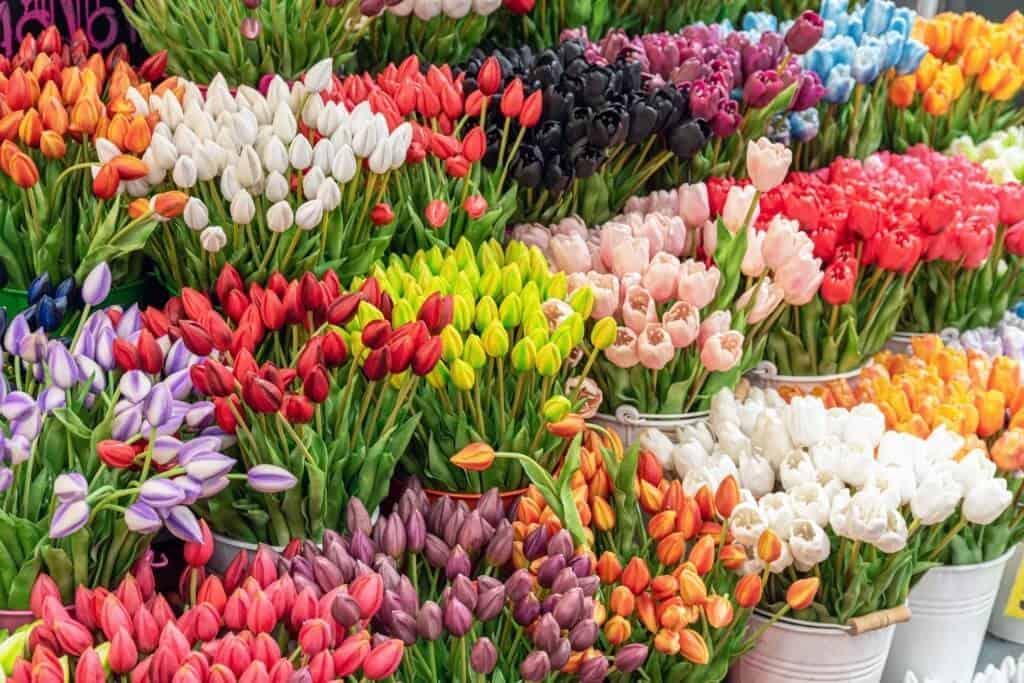
Tulip is a species in the lily order, Liliaceae. In the liliaceae family, tulips are classified into one of three suborders, lilioideae.
Classification: There are about 75 small species of tulip, divided into 4 lower classifications:
Tulips are mostly distributed along 40 latitude North, from Southeast Europe (Greece, Albania, Northern Macedonia, Kosovo, Southern Serbia, Bulgaria, and most of Romania, Ukraine, Russia) and western Turkey , along the Levant (3) (Syria, Israel, the Palestinian territories, Lebanon and Jordan) and the Sinai Peninsula. From there it extends eastward, past Jerrevan (Armenia) and Baku (Azebaijan) and the eastern coast of the Caspian Sea, past Turkmenistan, Bukhara, Samarkand and Taskent (Uzbekistan), to the eastern end of the Pamirs. Alai and the Tian Shan mountains in Central Asia. Further east, Tulips are also found in the Western Himalayas, southern Siberia, Mongolia, and Northwest China.
While researchers point out that there are no wild tulips in the western Balkans, there is evidence that tulipa sylvestris australis is native to Iberia and North Africa. Tulip is present from Ukraine in the North to Iran in the South. Although Tulips are present throughout the Mediterranean and Europe, these areas are not their natural distribution. Tulips were brought to Europe by travelers and traders from Anatolia and Central Asia.
Tulips are suitable for mountainous areas with a cool, neutral climate. They are found in many highlands and mountains, but later are grown in fields, gardens and roadsides.
Tulips appear increasingly popular around the world
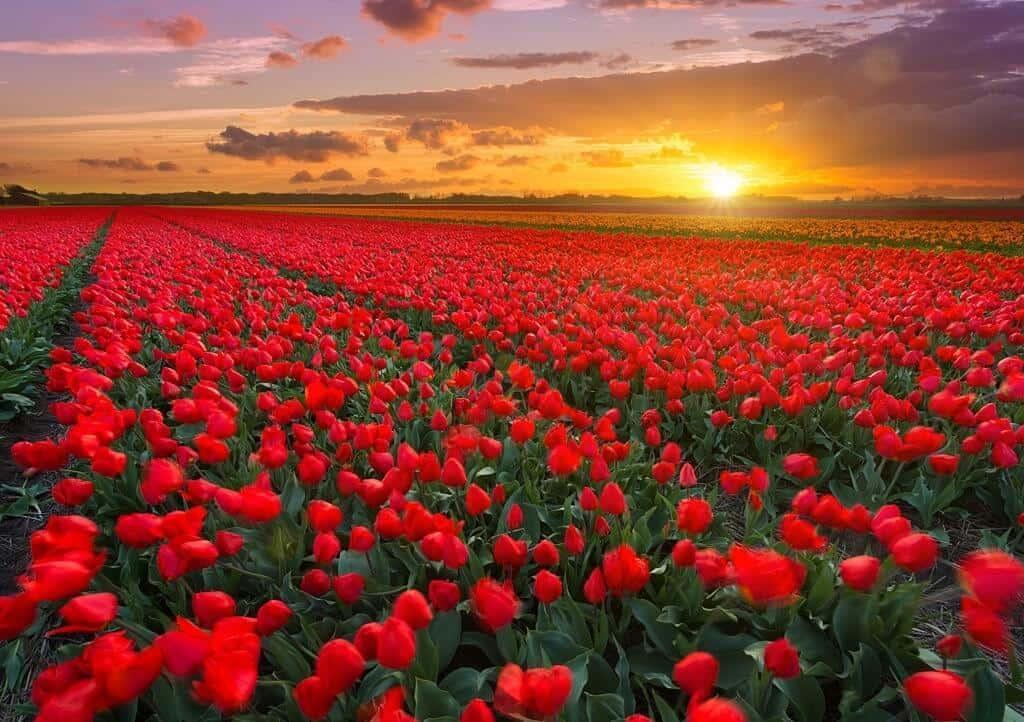
Currently, the Netherlands is the most famous country for Tulips because the Netherlands has a long-standing flower growing industry, not only breeding and developing many flower varieties (not only tulips) but also turning it into an industry. extremely developed. Dutch flower bulbs are widespread and almost available worldwide. This development is not only due to the fact that the Netherlands has a large flower farming industry, but also because the country’s climate is very suitable for flowers.
Besides the Netherlands, Tulip is also present in many places in the United States. There are many American seed companies that also develop plant and flower varieties. However, in Vietnam, we mostly buy plants/bulbs from the Netherlands, and this is the main source of our passion.
It can be said that tulip is the most famous flower in the Netherlands
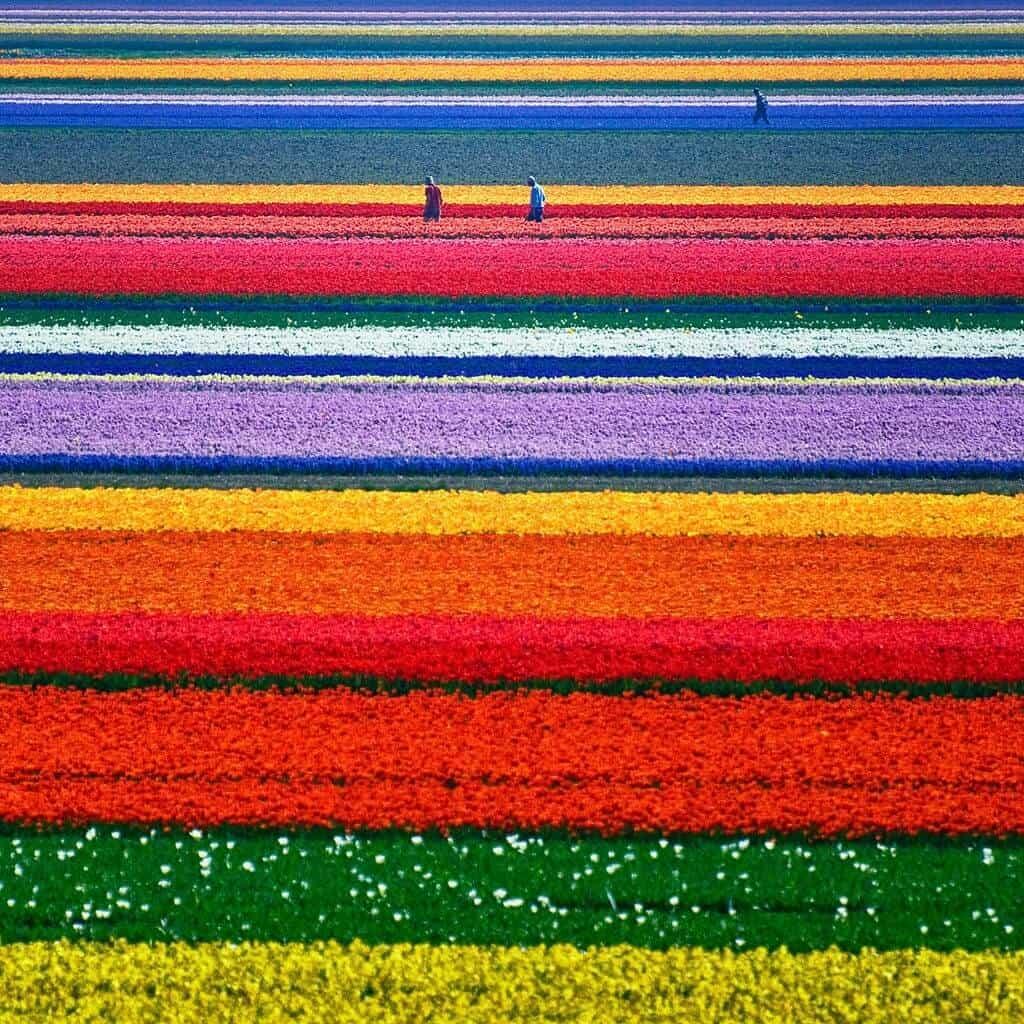
In the past, we only knew about Tulip in books and stories and really loved this beautiful flower because it has appeared in so many works of art, including literature, painting, photography, and film. photo… now, we can grow this beautiful flower ourselves, right in Vietnam.
As far as I remember, 10 years ago, tulips were only grown in Da Lat and flower lovers had to pay a small price for their love. But our love of flowers really helps us explore and find ways to grow seemingly “difficult” flowers. Tulip is one of the “difficult” flowers, and currently, in areas with cold winters such as the North, North Central and Central Highlands, you can grow your own Tulip pots, just certain instructions need to be followed.
Next I will introduce to you what you need to know when growing Tulips in Vietnam!
Source of Tulip bulbs
First, we need to remember that Tulips are grown from tubers, which means that when we read an advertisement or a sales page selling seeds, we need to immediately understand that it is a scam. Tulips can only be grown from tubers, not from seeds. I talk about this issue because nowadays there are many people taking advantage of people’s flower-loving spirit to cheat and make money illegally, causing a lot of unpleasant emotions, even boredom, and loss of hope. trust for others.
Second, we need to choose a place to buy guaranteed bulbs, because even in the Netherlands (the country that exports Tulip bulbs), there are sources of bulbs that are not guaranteed (because the bulbs are not of good quality in terms of size and quality). preservation process, and even leftover tubers from the previous year). Quality tulip bulbs are large bulbs, size 12-14 (ie bulb circumference about 12-14cm), have a hard and shiny outer shell, white flesh and are not scratched much, and are not moldy. If it’s the first time buying bulbs, we should buy from a place we know. If we don’t have a place we know, we need to take precautions. The most important thing is not to be cheap, because there are many cases where sellers use small bulbs grown from flower bulbs from the previous year, which do not guarantee flower size, and there are also cases where sellers use other cheap bulbs ( not tulip) sold to unknown buyers. Besides, tulip bulbs are only sold during the Tet season, which is about 35-45 days before Tet. If not within that time period, there is no guarantee anymore.
Quality tulip bulbs
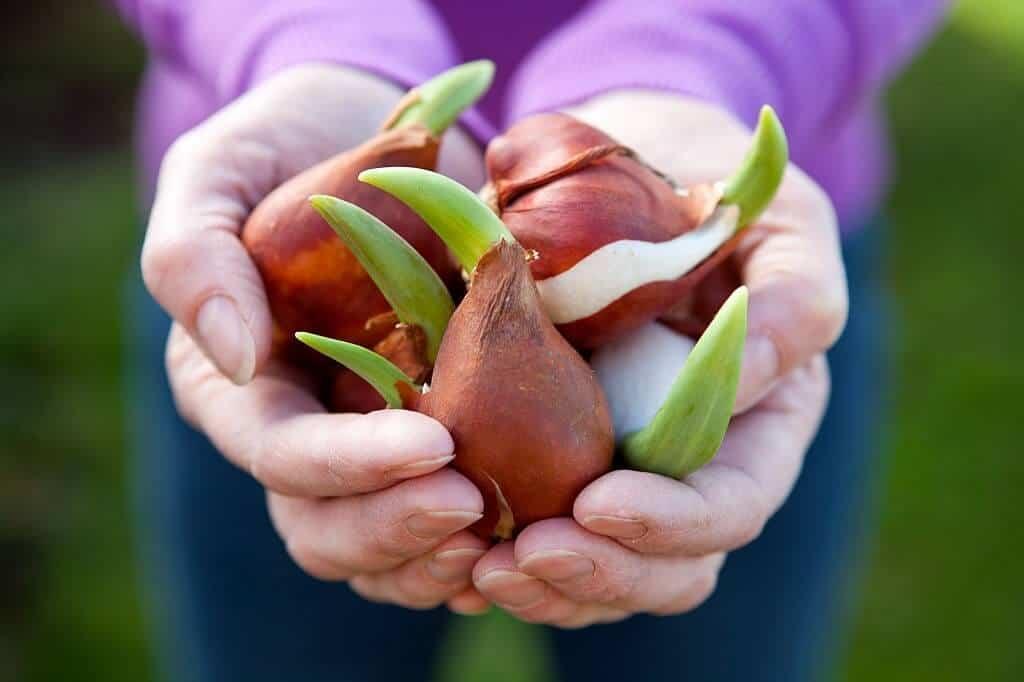
How to grow Tulips in Vietnam
After choosing good bulbs, we need to know how to plant them correctly to ensure we have beautiful tulip pots.
First, growing tulips in Vietnam is very different from that in temperate countries, in terms of both time and care. Due to different climatic conditions, in temperate countries, Tulip is a perennial flower (after the flowering season, the bulbs are cared for and mature in the soil, then will sleep after the cold winter, and will bloom in the spring). blooms again), planting is also extremely easy, just bury it in the soil and… wait. But in Vietnam, tulips are only grown during certain seasons, and are quite complicated (compared to other countries), so we need to pay a little attention as follows:
After planting, we water the substrate thoroughly. Make sure the planting medium is always moist, but not waterlogged (so choose a pot with easy drainage and a loose medium that drains easily), leave it in a sunny place for more than 2-4 hours a day because if there is a lack of sunlight, the plant will die. The buds become dry and difficult to grow, and the buds also wilt and make it difficult to flower.
Note: Because Tulips like to be cool (temperatures below 25 degrees), if on hot days above 25 degrees, tulips should not be left out in the sun. That’s why tulips are only grown in the North, in the winter.
Remember, always ensure the humidity of the tulip growing medium is at a moderate level, not too dry, nor too wet.
If we can ensure the above, then after only 20-30 days of growing tulips from bulbs, we will have beautiful tulip pots. At that time, we can also pull up tulips to put them in vases, or plant them in beautiful pots to display in the house.
Tulip is famous for its beauty and vibrant colors, but there is also a legend behind it. As I said above about the name of tulip, the name of this flower is derived from “turban” because after it blooms, it looks like the headgear of the old Persians (today’s Arabs).
Tulips have special meanings
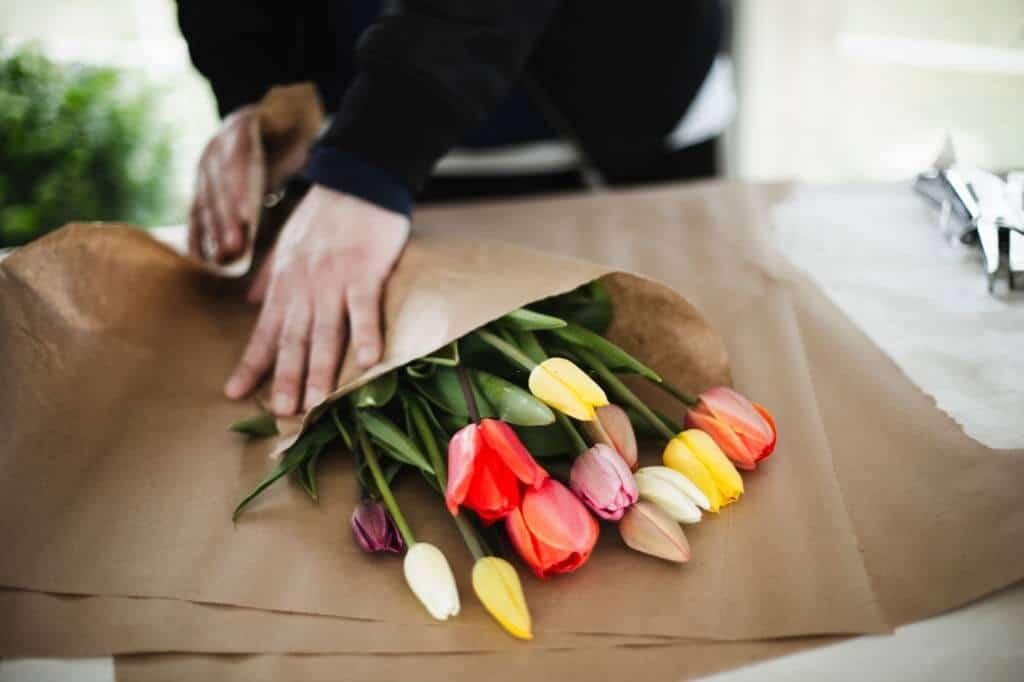
But there is also a story behind it. I will tell that story to you!
Tulip is a symbol of deep and perfect love. “Perfect love” is associated with ancient Turkish and Persian stories about the love between Farhad and Shirin.
There are many “versions” of this story because it has been told for a long time. In it, a story tells that Farhad was a prince, this prince fell in love with a beautiful girl named Shirin. However, she suddenly passed away, and her death tore the emperor into small pieces. The story goes that, in desperation, Farhad rode his horse and jumped into the abyss, and red tulips grew from where his blood seeped into the ground.
Another version says that Farhad was a stonemason, and Shirin was a princess. The stonemason tried to conquer the princess’s heart but failed. Heartbroken, he climbed the hills to play beautiful music to worship Princess Shirin. When she heard his songs, she fell passionately in love with him despite her father’s objections. After that, Shirin tested Farhad by asking him to dig an extremely large canal to prove his love.
The love story is like the story of Romeo and Juliet. The king sent someone to tell Farhad that Shirin was dead. Extremely sad and hopeless, the stonemason took his own life. When the princess learned he was dead, she was equally sad, and took her own life so she could go to the afterlife with him. The tulips that grew where their blood dripped to the ground were like a symbol of the eternal love they had for each other.
Tulips have a special story behind them
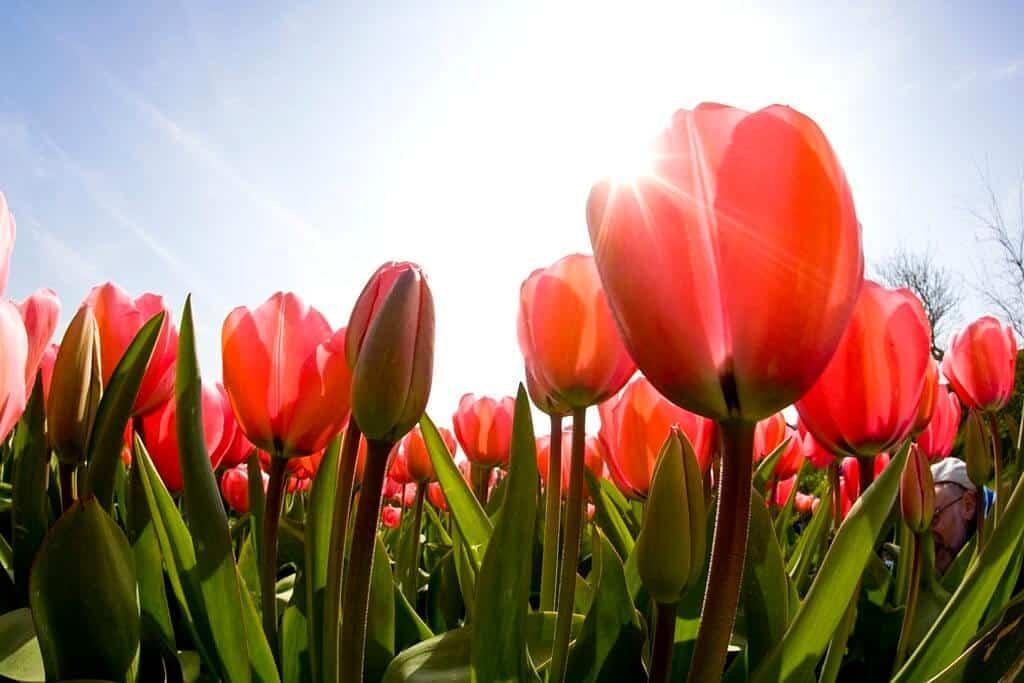
Meaning of tulips: Like many other flowers, tulips have many meanings attached to it. From the story of Farhad and Shirin, the most common meaning of this flower is deep and perfect love. In addition, tulips are also the first flowers to bloom in spring, which makes it mean resurrection and the beginning of a new life. That’s why Tulip is an extremely suitable gift for anyone who has just moved to a new home or a new job.
Note:
(1) Tulip mania – tulip syndrome, is the time when Tulip prices were inflated to their peak in the Netherlands, starting from the early 17th century until around 1637, when it peaked and began reduce. This shows the special appeal of this flower, which can create a trend so strong that it creates such a period.
(2) Rembrandt: Rembrandt Harmenszoon van Rijn, was a Dutch painter, considered one of the greatest Dutch artists in the history of Dutch art. Like many other artists of the Dutch Golden Age, Rembrandt was both an art collector and a businessman.
(3) Levant: is a geographical term describing a large area in the eastern Mediterranean region of western Asia. In a narrow sense, it is equivalent to the historical region of Syria, which currently includes Syria, Lebanon, Jordan, Israel, Palestine and most of Turkey. In a broad sense, the Levant region includes all of the eastern Mediterranean with its islands, including all the countries along the Mediterranean coast, extending to Greece and Cynenaica east of Libya.
